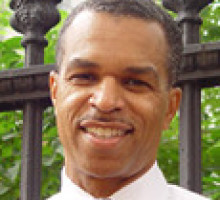
Reviews
John Rich joins the ranks of Rachel Carson, Michael Harrington and Ralph Nader for bringing attention to a pervasive social problem with a fresh perspective and warranted urgency.
John Rich was selected for a prestigious MacArthur Fellowship in 2006, and his incisive book demonstrates why. Replete with poignant vignettes, this book unveils his findings. Not surprisingly, he exposes the deep human sensitivity of his subjects. Highly recommended for readers of urban sociology texts such as Nicholas Lemann's The Promised Land: The Great Black Migration and How It Changed America.
A remarkable and sensitive account of [the author's] lengthy interviews with boys and young men who were rushed, bloodied and on gurneys, through the doors of the emergency room.
Those of us who spend time tracking violence and its impact on every aspect of life in urban America—as well as anyone with an ounce of humanity—ought to be thrilled to see a book like Wrong Place, Wrong Time come along. It looks beyond the gunplay, offering a window on urban violence by putting faces with the cold statistics and presenting stories in the victims' own words.
Wrong Place, Wrong Time calls us back to the table to see our safety as intimately connected to the safety of the young men we dismiss with cliche even as they become the prime bogeyman of our conscience in urban America.
In his vital new book, Wrong Place, Wrong Time, Rich lets the reader share and differentiate among the harrowing stories of young black men cut down by violence, stories he collected during the term of a five-year, $625,000 grant from the National Institutes of Health.
Rich does not sugarcoat the cycle of violence or portray the African-American men who populate the book as saints. Rich does holds out hope, however slim, that understanding that all human beings have more commonalities than divergences could make a difference.
A concise yet powerful examination of urban violence from the perspectives of those on the receiving end.
Powerful... Scholar-practioners like Dr. John Rich are helping find the answers we urgently need to better understand the cycle of violence and save our children from being its next victims.
Written in a style that would make an accomplished novelist proud, the attention to detail is remarkable. Rich takes the reader with him on a voyage of discovery as he interviews each subject. The case studies are punctuated with his honest, insightful and informed reflections as he recounts the real-life experiences of young black men and their search for a way out of their almost impossible lifestyles. The case studies are condensed summaries summaries of the author's involvement with these young men over a period of years.
Dr. Rich is an excellent writer. He is a passionate reporter who becomes one of his characters, as vulnerable as those he writes about.
Rather than dwell on statistics or prescribe policy, the stories reveal the human toll of violence and help explain the seemingly inexplicable levels of violence in particular communities. And like all good stories, they are both entertaining and edifying.
If we are going to reduce the violence in our devastated inner cities, we need to understand its causes. That is how Dr. Rich has done such an invaluable service: giving a voice to the young men who are routinely demonized for trafficking in violence and showing us humans reacting to desperate circumstances.
John Rich’s illuminating narrative powerfully renders America’s domestic 'killing fields.' Wrong Place, Wrong Time is an urgent and deeply moving up-close portrait of urban violence and the all too common killing of young black Americans—a highly perceptive work that provides in-depth understanding where there is often too little. It is a telling account that should be required reading by everyone.
John Rich, who has devoted so much of his career to the study of violence—especially in men of color—challenges us to see beyond the injuries and the anger and to hear and appreciate the plight of these men and to understand that they, like us, seek a place of safety in their lives.
Book Details
Preface
Introduction
1. Kari in Pain
2. Roy in Prerelease
3. Jimmy in the Hospital
4. Jimmy in the Street
5. In the Wrong Place
6. A Stone in the Heart
7. Roy in D.C.
8. Kari in the Clinic
9. Mark in the
Preface
Introduction
1. Kari in Pain
2. Roy in Prerelease
3. Jimmy in the Hospital
4. Jimmy in the Street
5. In the Wrong Place
6. A Stone in the Heart
7. Roy in D.C.
8. Kari in the Clinic
9. Mark in the Neighborhood
10. Kari in His Grandmother's House
11. Jimmy in Jail
12. Roy in the Pizzeria
13. Roy Back in Touch
14. Roy Settles In
Conclusion
Epilogue
Acknowledgments
Note on Sources






